Figurative Language Worksheets Results
Name: Figurative Language Worksheet 5 - Ereading Worksheets
Figurative Language Worksheet 5 Directions: Read the lines of poetry. Slashes represent line breaks. Figure out which technique is being used: simile, metaphor, hyperbole, or personification. In the boxes, explain how you figured out your answer. It is possible that more than one technique is being used. If you can, explain each. 1.
https://url.theworksheets.com/7hnk76 Downloads
Preview and Download !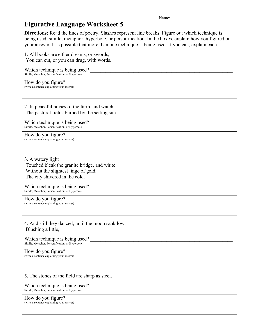
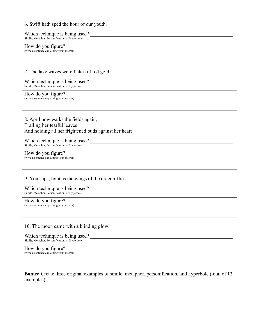

The Lemonade War - Henry County Schools
FIGURATIVE LANGUAGE: ONOMATOPOEIA PERSONIFICATION METAPHOR SIMILE Figurative language is when a writer or speaker describes something through the use of unusual comparisons, for effect, to add interest, or to make things clearer. A word that imitates the sound it describes. An example is “oink.” It is the actual sound that a pig makes.
https://url.theworksheets.com/3kq663 Downloads
Preview and Download !
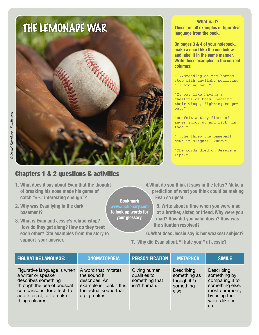
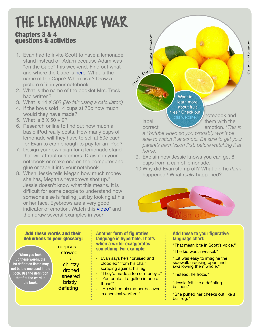
Reading Worksheet Writing Worksheet Work Sheets Human Language
Identifying Figurative Language #1 Answers http://www.ereadingworksheets.com/figurative-language-worksheets/identifying-figurative-language-1-answers.htm[4/24/2014 8 ...
https://url.theworksheets.com/2rag68 Downloads
Preview and Download !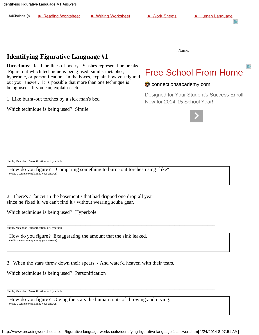
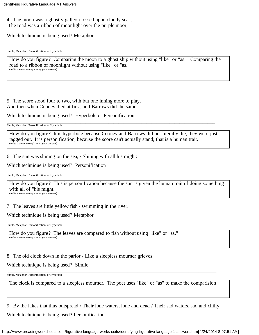
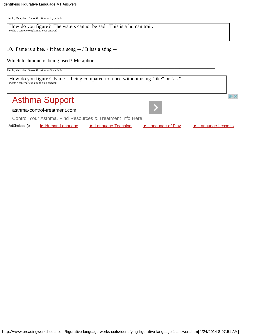
Activity Sheet in - SAN RAFAEL BBH ENGLISH CLUB
Task 2. Guess the Figurative Language! Listen again to your teacher as he/she reads the following lines from selected poems/songs. Determine the figurative language present in the following lines in each number. On the blank before each number, write P if it is personification, I if it is irony, and H if it is hyperbole. _____ 1.
https://url.theworksheets.com/8zt779 Downloads
Preview and Download !

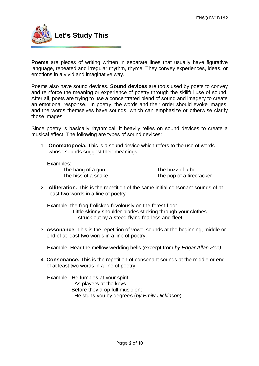
5th Grade Figurative Language - Richmond County School System
5th Grade Figurative Language Alliteration Alliteration is the repetition of a consonant sound at the beginning of words. Examples: The sweet smell of success It’s now or never Examples: Simile A comparison between two unlike things that have something in common is called a simile. A simile always uses the words like or as to make a comparison.
https://url.theworksheets.com/729059 Downloads
Preview and Download !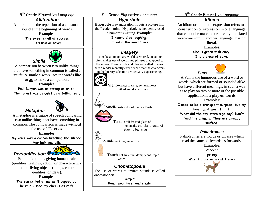

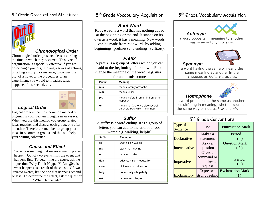
F i g u r a t ive L a n g u age L e ss o n Pl an : G ra de 8
Watch the BrainPOP Figurative Language and Similes and Metaphors movies. 2. Think and Do: Vocabulary: Define vocabulary and use in a sentence. Grap h ic Organizer: T hink of a topic for a poem then brainstorm similes and metaphors about the topic. 3. Assess: Take the Figurative Language quiz.
https://url.theworksheets.com/76vf66 Downloads
Preview and Download !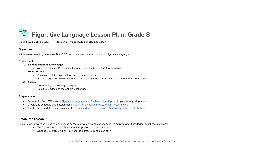
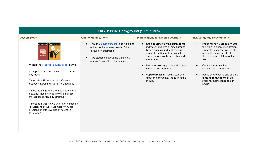

Fahrenheit 451 - Ms. Venti's Class
FIGURATIVE LANGUAGE is composed of many types of figures of speech, such as similes, metaphors, personification, symbolism, alliteration, hyperbole, onomatopoeias, idioms, and allusions. Fahrenheit 451 is packed with three main types of figures of speech, SIMILES, METAPHORS, and PERSONIFICATION.
https://url.theworksheets.com/18di78 Downloads
Preview and Download !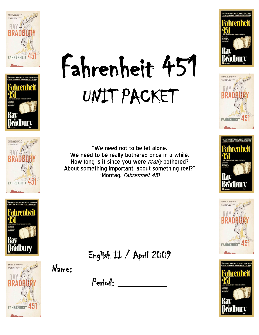
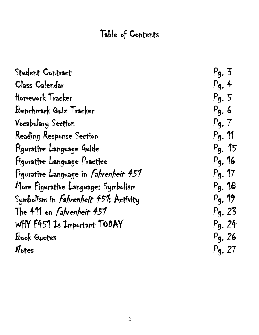
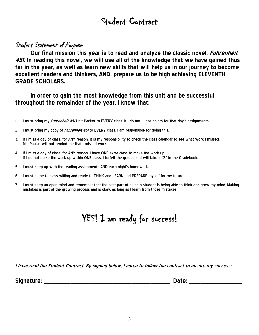
AP (QJOLVK /LWHUDWXUH DQG &RPSRVLWLRQ D Lesson Plan Figurative Language ...
Figurative Language—“To live and not be Thine Own”— is like: Literal meaning Figurative meaning/ perspective Write or type your response in this area. Write or type your response in this area. Write or type your response in this area. 2. Student Handout: “We Wear the Mask” by Paul Laurence Dunbar & Activity
https://url.theworksheets.com/7hnm72 Downloads
Preview and Download !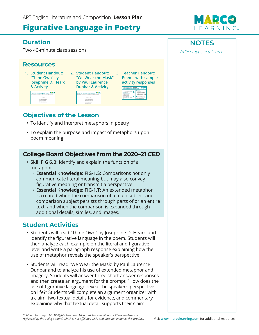
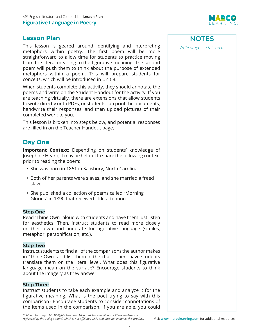

UNIT: DENOTATION & CONNOTATION - Education Research Center
A. CDE STANDARDS: 9 & 10 Reading/Language Arts 1.0 Word Analysis, Fluency, and Systematic Vocabulary Development 1.1 Identify and use the literal and figurative meaning of words 1.2 Distinguish between the denotative and connotative meanings of words and interpret the connotative power of words. B. OBJECTIVES Students will:
https://url.theworksheets.com/166n88 Downloads
Preview and Download !


<< Previous results